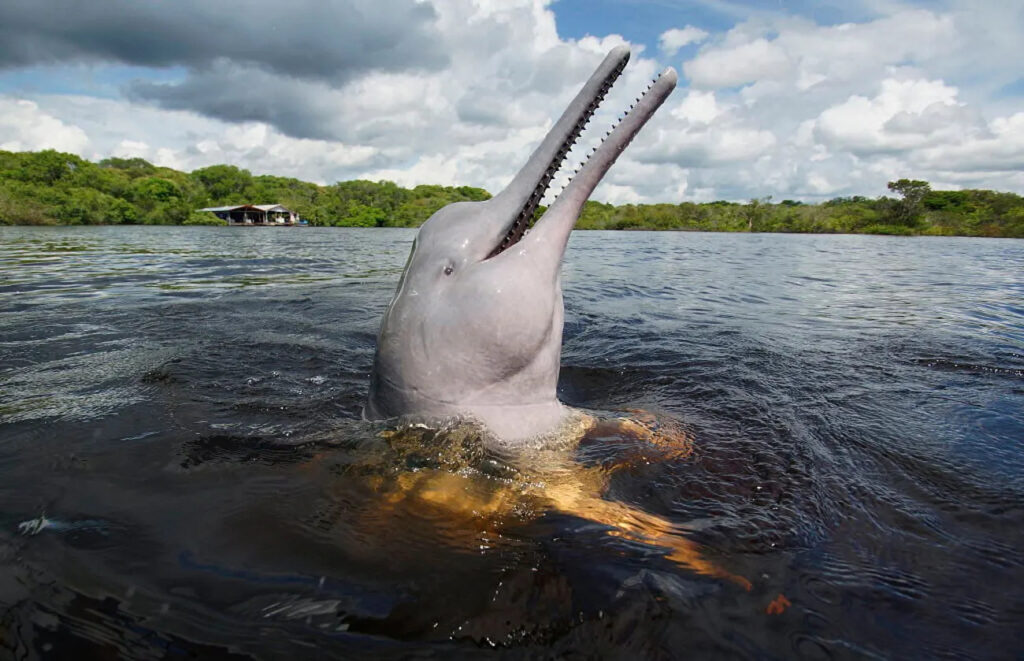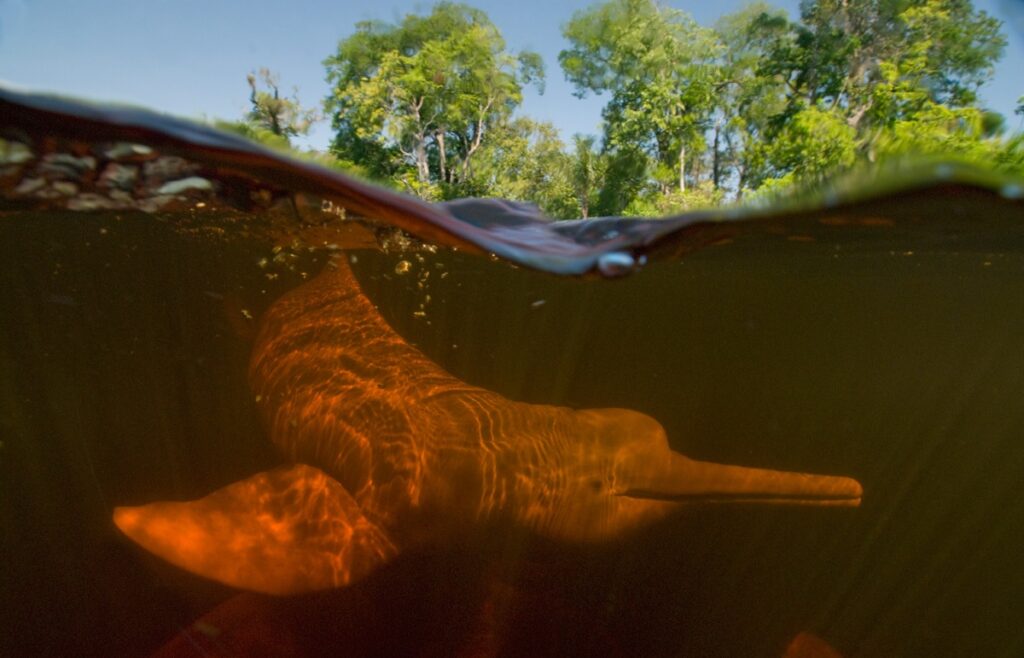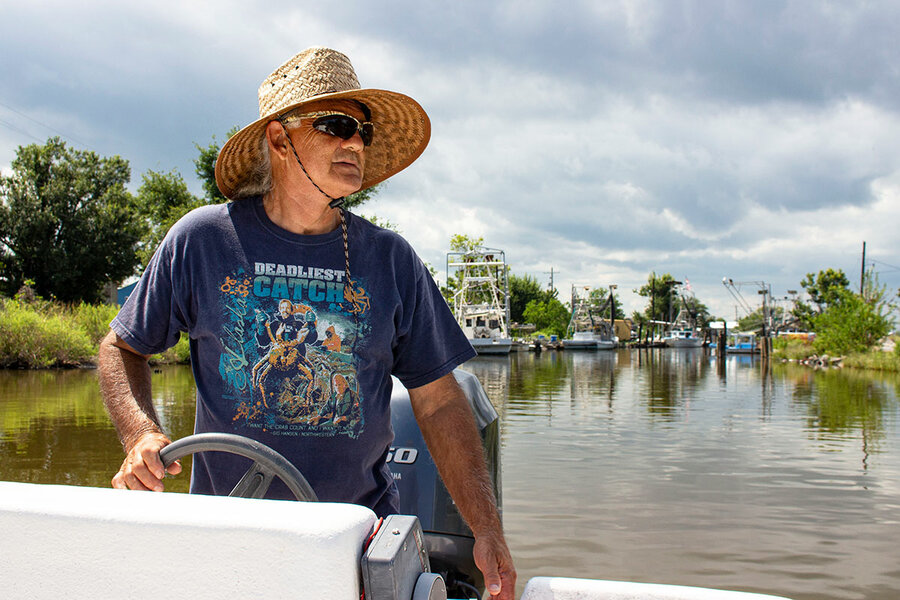Original publication by Dimitri Selibas for theguardian.com on 6 February 2023

Photograph: Hiroya Minakuchi/Minden/naturepl.com
Far upriver in the rainforest, the lure of rare pink river dolphins is creating jobs and promoting conservation and reconciliation after a 50-year war
The dolphins are more playful than us,” says Diego Cifuentes, co-founder of Villa Lilia Agroecoturistico, a community dolphin-watching project on Colombia’s Lake Nare. “If you give off good energy, they may even touch you.”

Photograph: Dimitri Selibas
Cifuentes is sitting on a boat in the middle of a lake surrounded by thick forest, a two-hour boat ride from San José del Guaviare. In the water, a dozen tourists bob in fluorescent lifejackets, waiting for the chance to meet a boto, the local name for the pink Amazon River dolphin (Inia geoffrensis). Soon enough, a plume of steam bursts from the water and the humped backs of three botos glide through the surface. The tourists giggle and squeal at the momentary encounter with the rare cetacean.
Rural communities, former guerrillas of the Farc (Revolutionary Armed Forces of Colombia) and endangered dolphins are unlikely allies in this near-forgotten corner of Colombia’s Amazon basin, where tourism is providing opportunities for reconciliation as well as creating jobs and promoting conservation.
“The guerillas cared for the dolphins and nature
-Diego Cifuentes
Indigenous peoples across Colombia, Brazil, Ecuador, Peru and Venezuela regard the boto as a divine creature. But with the dolphins’ numbers dwindling, the International Union for Conservation of Nature (IUCN) listed the boto as an endangered species in 2018. The threat to the dolphins is largely from being caught as fishing bycatch and killed for use as commercial fishing bait, as well as habitat disruption from dam-building, deforestation and pollution from chemicals and heavy metals, such as mercury from illegal gold mining.

Photograph: Dimitri Selibas
Cifuentes’s brother had the idea of starting the dolphin-watching project after moving to the area in 2011 and slowly getting to know the animals. It was at a time, says Cifuentes, that fishers saw river dolphins as a menace.
“They were angry with them because they are very voracious at eating fish,” says Cifuentes. “They would break the nets or tear them apart, get tangled up and suffocate.”
When they first came to the lake, the brothers, shoemakers by trade, had to ask permission from the Farc guerrillas to move into the area, Cifuentes says. If a fisherman killed a boto, a guerrilla would have a word with him. “It would happen once, but it wouldn’t happen again,” says Cifuentes. “The guerrillas cared for the dolphins and nature.”
These days botos are increasingly seen as being worth more alive than dead. The Omacha Foundation, a Colombian conservation organisation, calculated that each dolphin could bring in US$20,000 (£16,200) a year for the local economy through tourism, compared with $25 that a fisher could get for a dead dolphin.

Photograph: Jaime Rojo/WWF
There are nine botos living in Lake Nare. However, the lake is seasonal and opens on to the Guaviare River during the rainy season. Fernando Trujillo, scientific director of the Omacha Foundation and a leading Colombian marine biologist who has been studying dolphins in the Amazon for 35 years, warns that if the dolphins are disturbed too much, they could leave the area.
He says the nascent ecotourism industry has a lot of potential to promote marine conservation, as well as create jobs and educate people. It is part of a wider trend in Latin America, says Trujillo, of tourists flocking to see whales and dolphins. However, he says that if tourism is not properly managed it can create more damage to ecosystems, especially with “express tourism”.
“It’s a phenomenon that we see more and more frequently,” says Trujillo. “People want to easily check off everything in one day. They want to see a jaguar, swim with dolphins, dance with the Indigenous people, and take ayahuasca. All in just one day.

Photograph: Kevin Schafer/Minden/naturepl.com
“These charismatic species are important – they are fundamental – but ultimately, what we need is to generate sustainable processes in the territories,” he adds. “Neither dolphins, nor jaguars, nor turtles are going to exist in degraded, polluted ecosystems. We have to work with the people, we have to work with community processes, because if not, there is no sense in it.”
As part of its repositioning from a no-go conflict zone to a thriving ecotourism hub, Guaviare also offers visitors the chance to see rivers of pink algae and rock paintings more than 10,000 years old, as well as birdwatching in one of the most biodiverse places on the planet.
“Tourism allows us to really know what we have to take care of,” says Julian Eduardo Niño, founder of Geotours del Guaviare, an operator that works with Villa Lilia. He started his company in 2015, a year before the Colombian government and the Farc rebels signed the peace agreement.
Since then, he says, the peace process has had a positive economic impact on all those involved in today’s tourist industry, from tour companies and Indigenous communities to farmers selling sancocho stew.

Photograph: Dimitri Selibas
Sustainably managing the nascent environmental tourism industry is especially appealing in areas such as Guaviare, which were among the worst affected by the country’s 50-year civil war.
Colombia’s newly elected president, Gustavo Petro, himself a former guerrilla, has vowed to focus on these rural areas as he accelerates the transition from fossil fuels to clean energy and uses the country’s rich biodiversity to promote economic development.

Photograph: Dimitri Selibas
“We have a deep environmental spirit because it was instilled in us by the Farc,” says Ricardo Semillas, a former Farc commander who now leads the Marco Aurelio Buendia programme to reincorporate former guerrillas into civilian life. “Environmental protection was a very strict thing.”
Semillas, whose nom de guerre means seed in Spanish, says after laying down their arms, the former rebels looked at different options to earn an income and naturally gravitated to ecotourism. A recent initiative is the Manatu community project, which began in July 2022 and aims to give tourists the chance to learn about plants with healing properties, visit a replica Farc camp in the forest and hear stories from former combatants. Since its launch, the scheme has also attracted visitors who have been to see dolphins in Lake Nare.
“There are a lot of pluses, a lot of interesting things that I think are going to contribute a lot, including to heal,” says Semillas. “Being in contact with nature generates a lot of peace.”




